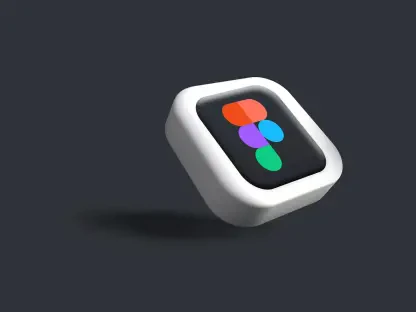Setting the Stage for UI Choices
Imagine a development team tasked with creating a desktop application under a tight deadline, where every decision could impact user satisfaction and project success, and the critical question arises: should the interface be built using a native framework tailored to the platform, or should it leverage web technologies for broader reach and faster iteration? This dilemma is at the heart of modern software design, as the choice between Native UI and Web UI shapes not only the application’s performance but also the development workflow. With desktop apps still commanding significant user engagement, understanding the strengths and trade-offs of each approach is essential for delivering solutions that meet diverse needs.
The debate over Native UI versus Web UI has evolved into a cornerstone of application strategy. Native UI relies on platform-specific toolkits to create interfaces that integrate deeply with the operating system, offering a seamless experience. In contrast, Web UI harnesses familiar web technologies like HTML, CSS, and JavaScript, often embedded in a browser or web view, to prioritize flexibility across platforms. This review dives into the intricacies of both paradigms, exploring their technical merits and practical implications for developers navigating today’s competitive landscape.
Diving into Native UI Capabilities
Performance and System Integration
Native UI stands out for its ability to interact directly with the operating system, bypassing unnecessary layers that could slow down execution. By utilizing platform-specific frameworks, applications achieve minimal latency and efficient resource usage, making this approach ideal for high-performance demands. Software giants like Microsoft Word and Adobe Photoshop exemplify how Native UI delivers responsiveness critical for complex tasks such as real-time editing or rendering.
Beyond speed, deep integration with system features is a hallmark of this technology. Developers can access hardware capabilities and native APIs with precision, enabling functionalities like advanced file handling or custom window behaviors that feel intuitive to users. This level of control is particularly valuable for applications where every interaction must align perfectly with the platform’s design language.
Challenges in Development Scope
Despite its strengths, Native UI comes with hurdles that can impact project timelines. Crafting an application for multiple platforms often requires separate codebases or extensive adaptation, increasing both effort and cost. The expertise needed to master platform-specific toolkits can also be a barrier, especially for smaller teams lacking specialized skills.
Moreover, maintaining consistency across different operating systems remains a persistent issue. Even with cross-platform native frameworks, subtle differences in behavior or appearance can frustrate users expecting uniformity. This complexity underscores the need for strategic planning when opting for a native approach over more universal alternatives.
Exploring Web UI Dynamics
Versatility and Development Speed
Web UI offers a compelling alternative by leveraging the ubiquitous nature of web technologies to streamline development. Running on HTML, CSS, and JavaScript within a browser or web view, apps like Visual Studio Code and Slack demonstrate how this approach enables rapid prototyping and deployment. The vast ecosystem of web components allows teams to build sophisticated interfaces without reinventing foundational elements.
Cross-platform compatibility is another significant advantage, as the browser abstracts many system-specific quirks. A single codebase can often run on multiple platforms with minimal adjustments, reducing the burden of maintaining separate versions. This portability is a boon for projects targeting diverse user bases or requiring frequent updates.
Performance Overhead and Limitations
However, the convenience of Web UI comes at a cost, particularly in terms of performance. Applications often bundle an entire browser runtime, as seen with Electron-based apps, leading to binary sizes that can exceed 100MB even for simple tools. Such overhead can deter users on resource-constrained devices or those sensitive to download sizes.
Latency is another concern, especially for real-time interactions, due to communication delays between the front end and back end via network sockets. Additionally, reliance on native web views introduces compatibility risks, as older systems may not support advanced features like WebAssembly. These factors highlight the trade-offs developers must weigh when prioritizing ease over efficiency.
Comparative Analysis of Use Cases
Where Native UI Shines
Native UI proves indispensable in scenarios demanding peak performance and minimal footprint. System utilities, high-performance creative software, and tools with optional graphical interfaces benefit from the direct access to system resources this approach provides. For instance, applications handling intensive computations or requiring precise hardware control often default to native frameworks to ensure reliability.
Industries such as gaming and professional media editing also lean heavily on Native UI for its ability to deliver tailored experiences. The seamless integration with platform aesthetics and behaviors fosters user trust, particularly in environments where consistency with the operating system is a priority. These use cases affirm the enduring relevance of native solutions in specialized domains.
Web UI’s Strong Suit in Collaboration
Conversely, Web UI excels in applications where collaboration and accessibility across platforms are paramount. Tools like chat applications or project management software thrive on the rapid iteration enabled by web technologies, allowing teams to roll out features quickly. Startups and agile projects often favor this approach to test ideas without committing to extensive native development cycles.
The ability to tap into a global developer community for pre-built components further accelerates progress. Cross-platform apps targeting diverse audiences, such as cloud-based productivity suites, leverage Web UI to ensure users on any device can participate without friction. This adaptability makes it a preferred choice for dynamic, user-focused solutions.
Emerging Directions in UI Technology
The landscape of UI development continues to shift as both paradigms adapt to modern demands. Web technologies are maturing into robust application platforms, with ongoing improvements in performance—such as enhanced WebAssembly capabilities—narrowing the gap with native solutions. This trend empowers smaller teams to create sophisticated interfaces without deep platform expertise, democratizing app creation.
Meanwhile, Native UI retains its stronghold in domains where every millisecond counts, supported by advancements in cross-platform native toolkits that aim to reduce development friction. A notable movement toward hybrid models is also gaining traction, blending the responsiveness of native code with the flexibility of web components. This convergence suggests a future where rigid distinctions may blur, offering developers more nuanced tools.
Reflecting on the Verdict
Looking back, this exploration of Native UI and Web UI revealed distinct strengths that shaped their respective roles in desktop application development. Native UI emerged as the champion of performance and deep system integration, while Web UI stood out for its unparalleled versatility and speed in deployment. Each approach carried inherent trade-offs, from the complexity of native coding to the overhead of web runtimes, yet both proved vital in their contexts.
Moving forward, developers are encouraged to adopt a strategic mindset, aligning their choice with specific project goals—whether prioritizing efficiency for resource-intensive tasks or flexibility for broad accessibility. Consideration of hybrid frameworks could offer a balanced path, merging the best of both worlds. As technology advances, staying attuned to innovations in web performance and native toolkits will be crucial for crafting applications that not only meet current demands but also anticipate future user expectations.









